

Insider GCSE creative writing tips + 106 prompts from past papers
by Hayley | Mar 9, 2023 | Exams , Writing | 0 comments
Are you feeling a little bit twitchy about your child’s English GCSE writing task?
Sciences and humanities – although sometimes daunting in their content – seem a fair bet as ‘revisable’ topics. But the creative writing element of the English Language GCSE is less knowable and ultimately more of a frightening prospect for a student keen to do well.
Preparing for the GCSE writing task? You don’t need to do it alone.
We run a weekly online writing club which prepares students to write high-scoring content. Our “Higher” level club is designed to transform your writing so that you can ace the GCSE language paper.
What is the GCSE writing element of the GCSE Language Paper?
There are 5 key GCSE exam boards: AQA , OCR , Pearson Edexcel , WJEC Eduqas and CCEA . Each board sets their own papers which may appear much the same at first glance (bizarrely they all have a similar front cover layout and fonts). Certainly there is plenty of overlap between their mark schemes and the comments and tips they share in their Examiner Reports.
However, as with all your child’s other subjects, it is essential to know which exam board they are preparing for. You may be surprised to discover that schools pick and choose boards by subject, perhaps choosing AQA for chemistry and OCR for mathematics. Individual school departments have their own preferences. My brother teaches at a school where their English Literature and English Language exams have been split between two different boards. This is unusual though, not the norm!
What forms (question formats) can the test take?
It varies by board.
The AQA board has a writing task in their Question Paper 1 called Explorations in creative reading and writing . Students are given two prompts to choose between. The AQA board also has a second persuasive writing task in Paper 2 called Writers’ viewpoints and perspectives.
Jump ahead to AQA creative writing and persuasive writing prompts from past GCSE papers
The Pearson/Edexcel international iGCSE favoured by many UK private schools has two prompts to choose between for each section. The student is asked to complete a piece of transactional writing (perhaps a persuasive speech or an advertisement leaflet) and additionally a piece of imaginative writing.
Jump ahead to Pearson/Edexcel transactional writing and imaginative writing prompts from past GCSE papers
Interestingly, the WJEC Eduqas board favours non-fiction writing. Unit 2 Reading and Writing: Description, Narration and Exposition gives two prompts to choose between, for an account and an essay perhaps, and Unit 3: Reading and Writing: Argumentation, Persuasion and Instructional sets up a letter, or similar.
Jump ahead to WJEC Eduqas non-fiction writing prompts from past GCSE papers
The OCR board offers two prompts to choose between. One might be a talk for other students and the other might be a letter on a difficult subject .
Jump ahead to OCR creative writing prompts from past GCSE papers
The CCEA board has a writing task in called “ Writing for Purpose and Audience and Reading to Access Non-fiction and Media Texts” and a second writing task which offers a choice between personal writing and creative writing.
Jump ahead to CCEA persuasive writing, personal writing, and creative prompts from past GCSE papers
How long do students have to craft their piece of writing?
Creative writing tests are timed at either 45 minutes or 1 hour. The last thing your child will need is to prepare to write for an hour, only to find they have just three-quarters of an hour on the day. If in doubt, insist that they check with their teacher.
AQA students are given 45 minutes to produce their writing response. The introduction advises: ‘ You are reminded of the need to plan your answer. You should leave enough time to check your work at the end.’ What this means is that 30–35 minutes max is what’s really allowed there for the writing itself.
Pearson/Edexcel allows 45 minutes for each of the two writing tasks.
OCR students are given an hour to complete this section of their exam. The introduction states: ‘You are advised to plan and check your work carefully,’ so they will expect the writing itself to take 45–50 minutes.
How long should the completed GCSE writing task be?
Interestingly, although the mark schemes all refer to paragraphingthey don’t state how many paragraphs they expect to see.
‘A skilfully controlled overall structure, with paragraphs and grammatical features used to support cohesion and achieve a range of effects’ (OCR)
‘Fluently linked paragraphs with seamlessly integrated discourse markers’ (AQA)
Why? Because management of paragraph and sentence length is a structural technique available to the student as part of their writers’ toolkit. If the number of optimal paragraphs were to be spelled out by the board, it would have a negative impact on the freedom of the writer to use their paragraphs for impact or to manage the pace of the reader.
For a general guide I would expect to see 3 to 5 paragraphs in a creative piece and 5 paragraphs in a persuasive piece. Leaflets have a different structure entirely and need to be set out in a particular form to achieve the top notes of the mark scheme.
What are the examiners looking for when they are marking a student’s creative writing paper?
There are two assessment objectives for the writing itself:
- It has to be adapted to the form, tone and register of writing for specific purposes and audiences.
- It has to use a range of vocabulary and sentence structures, with appropriate paragraphing, spelling, punctuation and grammar.
As a GCSE English nerd, I really enjoy delving deeper into the Examiner Reports that each board brings out once the previous cohort’s papers have been marked. They are a fascinating read and never disappoint…
Within their pages, examiners spell out the differences they have spotted between the stronger and the weaker responses.
For example, a creative task set by the AQA board was to describe a photograph of a town at sunset. The examiners explained that some of the strongest responses imagined changes in the scene as darkness descended. They enjoyed reading responses that included personification of the city, and those that imagined the setting in the past, or the weariness of the city. Weaker candidates simply listed what was in the picture or referred directly to the fact it was an image. This chronological-list approach weakened the structure of their work.
No surprises that some weaker students relied heavily on conversation. (As an exam marker myself, I dreaded reading acres of uninspiring direct speech.)
Pearson/Edexcel explain that weaker persuasive pieces (in this case on the value of television) simply listed pros and cons rather than developed ideas fully to clarify their own opinions. The higher-level responses here were quirky and engaging, entertaining the reader with a range of appropriate techniques and making the argument their own.
What accommodations are possible for students who have specific learning difficulties?
The UK Government’s Guide for Schools and Colleges 2022: GCSE, AS and A Levels includes information about changes to assessments to support ‘disabled students.’ Their definition of disabled includes specific learning difficulties (dyslexia, dyspraxia, ADHD, ADD, ASD etc).
Exam boards can make a wide range of adjustments to their assessments. Some of the most common adjustments are:
- modified papers (for example, large print or braille exam papers)
- access to assistive software (for example, voice recognition systems or computer readers)
- help with specific tasks (for example, another person might read questions to the student or write their dictated answers)
- changes to how the assessment is done (for example, an oral rather than a written assessment, word-processing rather than hand-writing answers)
- extra time to complete assessments
- exemptions from an assessment
The exam board will expect paperwork to be in place where your child’s specific needs are formally reported by an appropriate professional (Educational Psychologist, Clinical Psychologist, Consultant). The report needs to be recent, but how recent is difficult to confirm.
If your child is likely to need adjustments to their access arrangements you will need to discuss this with their school in plenty of time before the exam itself.
A close friend of mine realised in the final few weeks before her son’s GCSE exams that his tinnitus would have a negative impact on his performance. She approached the school to ask if he might take his exams in a separate room to minimise noise disturbance. Unfortunately, it was far too late by then to apply, and her son was denied the request.
Your child’s school will explain the process for applying for special arrangements and will be able to advise you on what your expectations should be. Never presume your child will be given what they need – but plenty of requests are successful, so stay positive and make sure your paperwork is in order beforehand.
Tips and strategies for writing a high scoring GCSE creative writing paper:
1. learn the formats.
Know the different formats and conventions of the different GCSE writing tasks. There is a standard layout for a leaflet, for example, where including contact details and a series of bullet points is part of the mark scheme. Not knowing these conventions will knock back a student’s score.
2. Plan ahead
Prepare a planning structure for each of the written forms you might encounter during the exam. It may need to be flexed on the day, but it will banish fear of the blank page and allow you to get started.
3. Prepare sentence-openings
Familiarise yourself with appropriate sentence-openings for each type of GCSE writing task. Fronted adverbials of time and place will improve the quality of a creative piece, whereas access to varied and specific conjunctions might push up the mark of a transactional piece.
4. Check your speaking
Ask your family to check your speech at home. Every now and then try to flip a sentence into formal language, using more interesting synonyms for your usual spoken vocabulary. This will help you to write formally on paper, avoiding colloquialisms.
5. Forget finishing
Finishing is less important than you might imagine. Sloppy, hurried work is your enemy. GCSE examiners will follow your clear planning and mark you accordingly, even if you’ve not managed to complete that final paragraph.
6. Note the details
The question often gives additional information the examiner would like to see included. Note it in your plan to make sure it doesn’t get forgotten.
7. Start strong
Use your best sentence-opener at the start of each paragraph. It will set you up as someone to be taken seriously.
8. Cut back dialogue
Keep dialogue contained in a single paragraph. Focus on description of the speaker and their actions before noting the second character’s reply.
9. Revise
Do this by prepping work as above. Nothing beats it.
Would you like me to transform your child’s writing in my higher writing club?
Each week in my higher writing club , we spend 20 minutes on Zoom together. After the task has been introduced, the students write for 15 minutes. Next, they upload their work for 1:1 video marking.
There is no point prepping essays/creative pieces for the GCSE English Language exam if your child’s writing is poor. First, their scruffy presentation, attention to detail, punctuation, grammar and vocabulary need to be addressed.
After 2 months in the higher writing club your child’s written technique and fluency will be transformed by our 1–2-1 video marking system (consistent messaging is achieved by matching your child with their own teacher).
Each weekly activity is drawn directly from the GCSE English Language Subject Content and Assessment Objectives , published by the English Department of Education.
Here’s an example of a student’s writing, BEFORE they joined our club:

It is chaotic, poorly-presented and nonsensical. Letter-sizing is confused and the student is clearly anxious and repeatedly scribbling through small errors.
Below is the same student 2 months later:

Observe the rich vocabulary, authorial techniques (the jagged rocks are ‘like shards of broken glass’) and general fluency and sophistication.
Real and recent GCSE example questions/prompts from each of the 5 key exam boards
Aqa english language gcse questions, paper 2 writers’ viewpoints and perspectives:.
- ‘Our addiction to cheap clothes and fast fashion means young people in poorer countries have to work in terrible conditions to make them. We must change our attitude to buying clothes now.’ Write an article for a magazine or website in which you argue your point of view on this statement. ( Source )
- ‘People have become obsessed with travelling ever further and faster. However, travel is expensive, dangerous, damaging and a foolish waste of time!’ Write an article for a news website in which you argue your point of view on this statement. ( Source )
- ‘Cars are noisy, dirty, smelly and downright dangerous. They should be banned from all town and city centres, allowing people to walk and cycle in peace.’ Write a letter to the Minister for Transport arguing your point of view on this statement. ( Source )
- ‘All sport should be fun, fair and open to everyone. These days, sport seems to be more about money, corruption and winning at any cost.’ Write an article for a newspaper in which you explain your point of view on this statement. ( Source )
Paper 1 Explorations in creative reading and writing:
- A magazine has asked for contributions for their creative writing section. Either write a description of an old person as suggested by the picture below or write a story about a time when things turned out unexpectedly. ( Source )

- Your school or college is asking students to contribute some creative writing for its website. Either, describe a market place as suggested by the picture below or write a story with the title, ‘Abandoned’. ( Source )

- Your local library is running a creative writing competition. The best entries will be published in a booklet of creative writing. Either, write a description of a mysterious place, as suggested by the picture below or write a story about an event that cannot be explained. ( Source )

- A magazine has asked for contributions for their creative writing section. Either, describe a place at sunset as suggested by the picture below or write a story about a new beginning. ( Source )
OCR English Language GCSE questions
Paper: communicating information and ideas.
- Either, Write a post for an online forum for young people about ‘A moment that changed my life’.
- Or, You are giving a talk at a parents’ information evening about why all children should study science at school. Explain your views. ( Source )
- Either, Write a letter to a friend to describe a challenging and unpleasant task you once had to do.
- Or, Write a short guide for new workers about how to deal successfully with difficult customers. ( Source )
- Either, “Was it worth it?” Write an article for a magazine to describe a time when you had to do something difficult.
- Or, Write a speech for an event to congratulate young people who have achieved something remarkable. ( Source )
- Either, Write the words of a talk to advise pet owners how to make life more enjoyable for their pet and themselves.
- Or, Write an article for a travel magazine to describe your dramatic encounter with an animal. ( Source )
- Either, ‘How I prefer to spend my time.’ Write the words of a talk to young people about your favourite activity
- Or, Write a magazine article to persuade parents to allow their teenage children more freedom. You are not required to include any visual or presentational features. ( Source )
- Either, Write a talk for other students about a person you either admire strongly or dislike intensely
- Or, Write a letter to a friend to explain a difficult decision you had to make. ( Source )
Paper: Exploring effects and impact
- Either, Hunger satisfied. Use this as the title for a story.
- Or, Write about a time when you were waiting for something. ( Source )
- Either, The Taste of Fear Use this as the title for a story.
- Or, Write about a time when you were exploring a particular place. ( Source )
- Either, Alone. Use this as the title for a story.
- Or, Describe a time when you found yourself in a crowd or surrounded by people. ( Source )
- Either, Land at Last. Use this as the title for a story.
- Or, Imagine you have visited somewhere for the first time and are now reporting back on your experience. ( Source )
- Either, The Playground Use this as the title for a story
- Or, Write about a memory you have of playing a childhood game. ( Source )
- Either, It seemed to me like I had been magically transported. Use this as the title for a story.
- Or, Describe a place where you have felt comfortable. ( Source )
Pearson Edexcel English Language iGCSE questions
Paper 1: transactional writing.
- Either, ‘In our busy twenty-first century lives, hobbies and interests are more important than ever.’ Write an article for a newspaper expressing your views on this statement.
- Or, ‘We are harming the planet we live on and need to do more to improve the situation.’ You have been asked to deliver a speech to your peers in which you explain your views on this statement. ( Source )
- ‘ Zoos protect endangered species from around the world.’ ‘No wild animal should lose its freedom and be kept in captivity. Write an article for a magazine in which you express your views on zoos.
- Write a review of an exciting or interesting event that you have seen. ( Source )
- Your local newspaper has published an article with the headline ‘Young people today lack any desire for adventure’. Write a letter to the editor of the newspaper expressing your views on this topic.
- ‘The key to success in anything is being prepared.’ Write a section for a guide giving advice on the importance of preparation. ( Source )
- You and your family have just returned from a holiday that did not turn out as you expected. Write a letter to the travel agent with whom you booked your holiday, explaining what happened.
- A magazine is publishing articles with the title ‘Friendship is one of the greatest gifts in life’. Write your article on this topic. ( Source )
- ‘Important lessons I have learned in my life.’ You have been asked to deliver a speech to your peers on this topic.
- Your local/school library wants to encourage young people to read more. Write the text of a leaflet explaining the benefits of reading. ( Source )
- ‘Most memorable journeys.’ A website is running a competition to reward the best articles on this subject. Write an article for the competition about a memorable journey.
- ‘Cycling is one form of exercise that can lead to a healthier lifestyle.’ Write a guide for young people on the benefits of exercise. ( Source )
- ‘Television educates, entertains and helps global understanding.’ ‘Television is to blame for society’s violence and greed and delivers one-sided news.’ You have been asked to deliver a speech in which you express your views and opinions on television.
- ‘Choosing a career is one of the most important decisions we ever make.’ Write the text of a leaflet that gives advice to young people on how to choose a career. ( Source )
- Write the text for a leaflet aimed at school students which offers advice on how to deal with bullying.
- A museum is planning to open a new exhibition called ‘Life in the Twenty-First Century’. ( Source )
Paper 2: Imaginative writing
- Write about a time when you, or someone you know, enjoyed success
- Write a story with the title ‘A Surprise Visitor’.
- Look at the two images below. Choose one and write a story that begins ‘I did not have time for this’ ( Source )

- Write about a time when you, or someone you know, challenged an unfair situation.
- Write a story with the title ‘Bitter, Twisted Lies’.
- Look at the two images below. Choose one and write a story that begins ‘It was a new day …’ You may wish to base your response on one of these images. ( Source )

- Write about a time when you, or someone you know, visited a new place.
- Write a story with the title ‘The Storm’
- Look at the two images below. Choose one and write a story that ends ‘I decided to get on with it.’ ( Source )

- Write about a time when you, or someone you know, saw something surprising.
- Write a story with the title ‘The Meeting’.
- Look at the two images below. Choose one and write a story that starts ‘Suddenly, without warning, there was a power cut.’ ( Source )

- Write about a time when you, or someone you know, went on a long journey.
- Write a story with the title ‘A New Start’
- Look at the two images below. Choose one and write a story that begins ‘I tried to see what he was reading. ( Source )

- Write about a time when you, or someone you know, felt proud.
- Write a story with the title ‘The Hidden Book’.
- Look at the two images below. Choose one and write a story that begins ‘It was like a dream’ ( Source )

- Write about a time when you, or someone you know, had to be brave
- Write a story with the title ‘Everything Had Changed’
- Look at the two images below. Choose one and write a story that begins ‘It was an unusual gift’. ( Source )

WJEC Eduqas English Language GCSE questions
Unit 2 reading and writing: description, narration and exposition.
- Write an account of a time when you enjoyed or hated taking part in an outdoor activity.
- “It’s essential that more people are more active, more often.” (Professor Laura McAllister, Chair of Sport Wales) Write an essay to explain how far you agree with this view, giving clear reasons and examples. ( Source )
- Describe an occasion when you did something you found rewarding.
- Famous chefs such as Jamie Oliver and Mary Berry have spoken of the need for better food and better education about food in schools. Write an essay to explain your views on this subject, giving clear reasons and examples. ( Source )
- Write an account of a visit to a dentist or a doctor’s surgery.
- NHS staff, such as doctors and nurses, provide excellent service in difficult circumstances. Write an essay to explain your views on this subject, giving clear reasons and examples. ( Source )
- Write an article for a travel magazine describing somewhere interesting that you have visited.
- You see the following in your local newspaper: ‘Young people are selfish. They should all be made to volunteer to help others.’ Write an essay to explain your views on this subject, giving clear reasons and examples. ( Source )
- Describe an occasion when technology made a difference to your life.
- Write an account of a time you were unwilling to do something. ( Source )
- Describe a time when you faced a challenge
- Write an essay explaining why charity is important, giving clear reasons and examples. ( Source )
- Write an account of a time when you did something for the first time.
- “It’s time for us to start making some changes. Let’s change the way we eat, let’s change the way we live, and let’s change the way we treat each other.” Tupac Shakur Write an essay on the subject of change, giving clear reasons and examples. ( Source )
- “School uniform is vitally important in all schools.” Write an essay explaining your views on this, giving clear reasons and examples.
- Describe a time when you had to create a good impression. ( Source )
Unit 3: Reading and writing: Argumentation, persuasion and instructional
- Your school/college is considering using more Fairtrade items in its canteen. Although this will help to support Fairtrade farmers, it will mean an increase in the price of meals. You feel strongly about this proposal and decide to write a letter to your Headteacher/Principal giving your views. ( Source )
- Increasing litter levels suggest we have lost all pride in our beautiful country. Prepare a talk for your classmates in which you give your opinions on this view. ( Source )
- Write a guide for other students persuading them to stay safe when using social media and the internet. ( Source )
- According to your PE teacher, ‘Swimming is the very best form of exercise.’ You have been asked to prepare a talk for your classmates in which you give your views about swimming. ( Source )
- You read the following in a newspaper: ‘Plastic is one of the biggest problems faced by our planet. Why would we use something for a few minutes that has been made from a material that’s going to last forever?’ Write a letter to the newspaper giving your views on the use of plastic. ( Source )
- “People today never show enough kindness to one another. We must make more effort to be kind.” Write a talk to give on BBC Wales’ new programme Youth Views persuading young people to be kind to others. ( Source )
- ‘We have enough problems in the world without worrying about animals.’ Write an article for the school or college magazine giving your views on this statement.
- You would like to raise some money for an animal charity. Write a talk for your classmates persuading them to donate to your chosen charity. ( Source )
CCEA English Language GCSE questions
Unit 1: writing for purpose and audience and reading to access non-fiction and media texts.
- Write a speech for your classmates persuading them to agree with your views on the following issue: “Young people today are too worried about their body image.” ( Source )
- Write an article for your school magazine persuading the readers to agree with your views on the following question: “Should school uniform have a place in 21st century schools?” ( Source )
- Write a speech for your classmates persuading them to agree with your views on the following question: “Are celebrities the best role models for teenagers?” ( Source )
- Write an article for your school magazine persuading the readers to agree with your views on the following statement: “Advertising is just another source of pressure that teenagers don’t need!” ( Source )
Unit 4: Personal or creative writing and reading literacy and non-fiction texts
- Either, Personal writing: Write a personal essay for the examiner about what you consider to be one of the proudest moments in your life.
- Or, Creative writing: Write your entry for a creative essay writing competition. The audience is teenagers. You may provide your own title. ( Source )
- Write a personal essay for the examiner about an experience that resulted in a positive change in your life.
- Write a creative essay for the examiner. The picture below is to be the basis for your writing. You may provide your own title. ( Source )

- Personal writing: Write a speech for your classmates about the most interesting person you have ever met.
- Creative writing: Write a creative essay for your school magazine. The picture below is to be the basis for your writing. You may provide your own title. ( Source )

- Personal writing: Write a personal essay for the examiner describing your dream destination.
- Creative writing: Write a creative essay for publication in your school magazine. The picture below is to be the basis for your creative writing. You may provide your own title. (Source)

Get 1:1 support and personalized feedback on your GCSE creative writing practice
For 1–2-1 writing support for your pre-GCSE child, join the Griffin Teaching Higher Writing Club—online weekly writing classes specifically tailored to English GCSE creative writing preparation.
In just 20 minutes per week and their writing will be transformed.
AQA GCSE English Language Past Papers
This section includes recent GCSE English Language past papers (9-1) (8700) from AQA. You can download each of the AQA GCSE English Language past papers and marking schemes by clicking the links below.
November 2022 AQA GCSE (9-1) English Language (8700) Past Exam Papers
November 2022: Paper 1: Explorations in Creative Reading and Writing (8700/1) Download Insert - Download Past Paper - Download Mark Scheme
November 2022: Paper 2: Writer's Viewpoints and Perspectives (8700/2) Download Insert - Download Past Paper - Download Mark Scheme
June 2022 AQA GCSE (9-1) English Language (8700) Past Exam Papers
June 2022: Paper 1: Explorations in Creative Reading and Writing (8700/1) Download Insert - Download Past Paper - Download Mark Scheme
June 2022: Paper 2: Writer's Viewpoints and Perspectives (8700/2) Download Insert - Download Past Paper - Download Mark Scheme
November 2021 AQA GCSE (9-1) English Language (8700) Past Exam Papers (Labelled as June 2021)
November 2021: Paper 1: Explorations in Creative Reading and Writing (8700/1) Download Insert - Download Past Paper - Download Mark Scheme
November 2021: Paper 2: Writer's Viewpoints and Perspectives (8700/2) Download Insert - Download Past Paper - Download Mark Scheme
November 2020 AQA GCSE (9-1) English Language (8700) Past Exam Papers (Labelled as June 2020)
November 2020: Paper 1: Explorations in Creative Reading and Writing (8700/1) Download Insert - Download Past Paper - Download Mark Scheme
November 2020: Paper 2: Writer's Viewpoints and Perspectives (8700/2) Download Insert - Download Past Paper - Download Mark Scheme
June 2019 AQA GCSE (9-1) English Language (8700) Past Exam Papers
June 2019: Paper 1: Explorations in Creative Reading and Writing (8700/1) Download Insert - Download Past Paper - Download Mark Scheme
June 2019: Paper 2: Writer's Viewpoints and Perspectives (8700/2) Download Insert - Download Past Paper - Download Mark Scheme
November 2018 AQA GCSE (9-1) English Language (8700) Past Exam Papers
November 2018: Paper 1: Explorations in Creative Reading and Writing (8700/1) Download Insert - Download Past Paper - Download Mark Scheme
November 2018: Paper 2: Writer's Viewpoints and Perspectives (8700/2) Download Insert - Download Past Paper - D ownload Mark Scheme
June 2018 AQA GCSE (9-1) English Language (8700) Past Exam Papers
June 2018: Paper 1: Explorations in Creative Reading and Writing (8700/1) Download Insert - Download Past Paper - Download Mark Scheme
June 2018: Paper 2: Writer's Viewpoints and Perspectives (8700/2) Download Insert - Download Past Paper - Download Mark Scheme
November 2017 AQA GCSE English Language (8700) Past Exam Papers
November 2017: Paper 1: Explorations in Creative Reading and Writing (8700/1) Download Insert - Download Past Paper - Download Mark Scheme
November 2017: Paper 2: Writer's Viewpoints and Perspectives (8700/2) Download Insert - Download Past Paper - Download Mark Scheme
June 2017 AQA GCSE English Language (8700) Past Exam Papers
June 2017: Paper 1: Explorations in Creative Reading and Writing (8700/1) Download Insert - Download Past Paper - Download Mark Scheme
June 2017: Paper 2: Writer's Viewpoints and Perspectives (8700/2) Download Insert - Download Past Paper - Download Mark Scheme
For more GCSE English Language past papers from other exam boards click here .

- Free Taster Sessions
- 11+ Mock Exams
- 11 Plus Booster Courses
- GCSE Maths Booster Courses
- Free Consultation
- Levelled Reading List
- Student Booklist
- Exam Preparation
- One-to-One Tuition
- Free Taster Session in Seven Kings
- Seven Kings Timetables
- Seven Kings Price List
- Free Taster Session in Loughton
- Loughton Timetables
- Loughton Price List
- Free Resources
- Accessories
- Redbridge Publishing
- Our Processes
- Our Mission – to empower children through education
- Testimonials
- Bancroft’s School
- Beths Grammar School
- Bexley Grammar School
- Chigwell School
- Chislehurst and Sidcup Grammar School
- City of London School for Boys
- City of London School for Girls
- Forest School
- Haberdashers’ Boys’ School
- Ilford County High School
- King Edward VI Grammar School
- The Latymer School
- Woodford County High School
- 11+ Booster Courses
How to Structure Creative Writing for GCSE (Creative Writing Examples!)
Posted on August, 2022

Structure Creative Writing for Success
Having plenty of ideas for creative writing is one thing, but nailing down the right structure can be a bit more challenging.
There are several steps for children to think about before they begin writing, and that includes creating a structure or plan for how their story will flow.
Creative writing is all about grabbing the reader’s attention immediately, so children in their GCSE years need to understand the importance of structure when writing, in order to organise their ideas and make sure their work reads cohesively.
In this post, we will go through everything your child needs to know from paragraphing, to creating a satisfying ending, providing examples along the way to demonstrate the best way to structure their creative writing.
How Should I Structure Creative Writing?
There are several types of creative writing questions that could come up on the GCSE reading and writing exam. There will be the option to either write creatively based on an image, or a made-up scenario.
Having a solid structure for longer creative writing questions and exercises helps to ensure your child is prepared.
By using a structure that helps to organise your child’s ideas, it helps their writing to flow. It also allows your child to become more confident in their creative writing process.
Planning is more important than you might think, as mark schemes from most exam boards include ‘well-controlled paragraphs’ or something very similar within the top band of criteria for creative writing.
Therefore, children should practise planning out creative writing structures well before their writing exam. Planning gives them time to get into the habit of always providing themselves with a simple, but focused idea of what they are going to write.
Structure Creative Writing with Seven Story Archetypes
Introduction.
Understanding the fundamental structure of a story is crucial for crafting engaging narratives. Beyond basic sequences, story archetypes provide a deeper framework. Christopher Booker , a renowned scholar, identified seven main story archetypes.
Each archetype outlines a distinctive journey and the challenges faced by characters.
1. Overcoming the Monster
This archetype portrays an underdog’s quest to conquer a formidable evil. Examples include the epic tales of Harry Potter battling Lord Voldemort, the classic struggle in Jurassic Park, and the timeless narrative of Jack and the Beanstalk.
2. Rags to Riches
Embarking from a starting point of poverty or despair, characters rise to newfound wealth and success. Witness this transformation in stories like Slumdog Millionaire, The Pursuit of Happyness, and The Wolf of Wall Street.
3. The Quest
A hero’s journey to discover something, overcoming trials and tribulations along the way. Iconic examples include the Fellowship of the Ring’s quest in The Lord of the Rings, Marlin’s journey to find Nemo, and the epic adventures of Odysseus in The Odyssey.
4. Voyage and Return
Protagonists venture into unknown territories, facing adversity before returning home transformed. Dive into this archetype with examples like the curious escapades in Spirited Away, Bilbo Baggins’ journey in The Hobbit, and the enchanting Chronicles of Narnia.
Contrary to our typical perception of humour, this archetype involves destined lovers kept apart by conflicting forces. Delight in the comedic twists of relationships in classics such as 10 Things I Hate About You, When Harry Met Sally, and Notting Hill.
Protagonists with major flaws or errors leading to their inevitable downfall. Witness the unraveling of characters in tragedies like The Great Gatsby, Requiem for a Dream, and the Shakespearean masterpiece Othello.
Characters succumb to darkness but redeem themselves throughout the narrative. Experience the transformative journeys in stories like Atonement, American History X, and the animated Beauty and the Beast.
Application Across Mediums
Beyond literature, these archetypes seamlessly apply to filmmaking and photography. A well-crafted photograph or film can mirror the same narrative arcs, captivating viewers on a visual adventure akin to storytelling. Explore these archetypes to infuse depth and resonance into your creative endeavors.
Paragraphing for a Solid Creative Writing Structure
First of all, paragraphing is central to creative writing as this is what keeps the structure solid.
In order to stick to a creative writing structure, children must know exactly when to end and start a new paragraph, and how much information each paragraph should contain.
For example, introducing the main character, diving into the action of the story, and providing 10 descriptive sentences of the weather and location, could be separated and spread throughout for impact.
Structuring a creative writing piece also involves creating an appropriate timeline of events. Then, you must map out exactly where the story will go from start to finish. This is assuming the writing piece is in sequential order.
Occasionally, there may be a question that requires a non-sequential order.
Master creative writing with our Ultimate Creative Writing Workout!
http://redbridgetuition.co.uk/product/ultimate-creative-writing-workout/
What does a Solid Creative Writing Structure look like?
This list below details every section in a creative writing piece and should look something like this:
- An engaging opening
- A complication
- The development
- The turning point
- A resolution or convincing close
With this structure, it is important to bear in mind that for the AQA GCSE English Language paper 1 reading and creative writing exam.
You can also use Freitag’s pyramid or a story mountain to help you understand the basic structure of a story:
Children will be expected to spend about 50 minutes on the creative writing section. It’s therefore vital to get them into the habit of planning their writing first. As with anything, practice makes perfect.
If you want to find out more about GCSE English Language papers 1 and 2, check out our blog .
We will dive deeper into the creative writing structure further on in this post, but first, let us go through the importance of paragraphing, and how TipTop paragraphs can help to improve children’s writing.
Paragraphing and TipTop Paragraphs
Before children begin to plan out the structure of their stories, it’s essential that they know the importance of paragraphing correctly first.
At this stage of learning, your child should be comfortable in knowing what a paragraph is, and understand that they help with the layout of their stories throughout the whole writing process.
Paragraphs essentially help to organise ideas into dedicated sections of writing based on your child’s ideas. For example, having a paragraph for an introduction, then another paragraph introducing the main character.
This means your child’s writing will be in a logical order and will direct the reader further on into the writing.
Be as creative as Kevin’s booby traps from “ Home Alone “.
To avoid your child straying from their creative writing structure and overloading paragraphs with too much information, there is a simple way to remind them of when they need to start a new paragraph.
TiPToP for a Clearer Creative Writing Structure
Using the TiPToP acronym is such an easy way for you to encourage your child to think about when they need to change paragraphs, as it stands for:
When moving to a different time or location, bringing in a new idea or character, or even introducing a piece of action or dialogue, your child’s writing should be moving on to new paragraphs.
During creative writing practice, your child can ask themselves a series of questions to work out whether they need to move onto a new paragraph to keep their story flowing and reach that top band of criteria.
For example:
- Is the story going into a new day or time period?
- Is the location staying the same or am I moving on?
- Am I bringing in a new idea that I haven’t described yet?
- Am I going to bring in a new character?
Providing opportunities to practise creative writing will help your child to get into the habit of asking themselves these questions as they write, meaning they will stick to the plan they have created beforehand.
Now it’s time to get into the all-important creative writing structure.
Structure Creative Writing: A Step-by-Step Guide
Producing a creative writing structure should be a simple process for your child, as it just involves organising the different sections of their writing into a logical order.
First, we need to start at the beginning, by creating an engaging opening for any piece of writing that will grab the reader’s attention. You might also be interested to check out this blog on story structure that I found in my research.
This leads us nicely onto step 1…
1. Creating an Engaging Opening
There are several ways to engage the reader in the opening of a story, but there needs to be a specific hook within the first paragraph to ensure the reader continues.
This hook could be the introduction of a word that the reader isn’t familiar with, or an imaginary setting that they don’t recognise at all, leaving them questioning ‘What does this all mean?’
It may be that your child opens their story by introducing a character with a description of their appearance, using a piece of dialogue to create a sense of mystery, or simply describing the surroundings to set the tone. This ‘hook’ is crucial as it sets the pace for the rest of the writing and if done properly, will make the reader feel invested in the story.
Read more about hooks in essays .
If your child needs to work more on description, I definitely recommend utilising the Descriptosaurus :
Additionally, it’s important to include a piece of information or specific object within the opening of the creative writing, as this provides something to link back to at the end, tying the whole storyline together neatly.
Engaging Opening Examples:
- Opening with dialogue – “I wouldn’t tell them, I couldn’t”
- Opening with a question – “Surely they hadn’t witnessed what I had?”
- Opening with mystery/ or a lack of important information – “The mist touched the top of the mountains like a gentle kiss, as Penelope Walker stared out from behind the cold, rigid bars that separated her from the world.”
2. Complication
Providing a complication gets the storyline rolling after introducing a bit of mystery and suspense in the opening.
Treat this complication like a snowball that starts small, but gradually grows into something bigger and bigger as the storyline unfolds.
This complication could be that a secret has been told, and now the main character needs to try and stop it from spreading. Alternatively, you could introduce a love interest that catches the attention of your main character.
In this section, there should be a hint towards a future challenge or a problem to overcome (which will be fleshed out in the development and climax sections) to make the reader slightly aware of what’s to come.
Complication Example:
- Hint to future challenge – “I knew what was coming next, I knew I shouldn’t have told him, now my secret is going to spread like wildfire.”
- Including information to help understand the opening – “Bainbridge Prison was where Penelope had spent the last 2 years, stuffed into a cell the size of a shoebox, waiting for August the 14th to arrive.”
3. Development
The development seamlessly extends from the previous section, providing additional information on the introduced complication.
During this phase, your child should consider the gradual build-up to the writing piece’s climax. For instance, a secret shared in the compilation stage now spreads beyond one person, heightening the challenge of containment.
Here, your child should concentrate on instilling suspense and escalating tension in their creative writing, engaging the reader as they approach the climax.
Development Example:
- Build-up to the challenge/ climax – “I saw him whispering in class today, my lip trembled but I had to force back my tears. What if he was telling them my secret? The secret no-one was meant to know.”
- Focusing on suspense – “4 more days to go. 4 more days until her life changed forever, and she didn’t know yet if it was for better or for worse.”
The climax is the section that the whole story should be built around.
Before creating a structure like this one, your child should have an idea in mind that the story will be based on. Usually this is some sort of shocking, emotion-provoking event.
This may be love, loss, battle, death, a mystery, a crime, or several other events. The climax needs to be the pivotal point; the most exciting part of the story.
Your child may choose to have something go drastically wrong for their main character. They must regardless, need to come up with a way of working this problem into their turning point and resolution. The should think carefully about this will allow the story to be resolved and come to a close.
Climax Example:
- Shocking event: “He stood up and spoke the words I never want to hear aloud. ‘I saw her standing there over the computer and pressing send, she must have done it.’”
- Emotion-provoking event: “The prisoners cheered as Penelope strutted past each cell waving goodbye, but suddenly she felt herself being pulled back into her cell. All she could see were the prison bars once again.”
5. Turning Point or Exposition
After the climax, the story’s turning point emerges, crucial for maintaining reader interest.
During this post-climax phase, address and resolve issues, acknowledging that not every resolution leads to a happy ending.
Turning points need not be confined to the story’s conclusion; they can occur at various junctures, signifying significant narrative shifts.
Even in shorter pieces, introducing turning points early on can captivate the reader.
Creative writing allows for individual storytelling, and effective turning points may differ between your child and you.
Maintain suspense in this section, avoiding premature revelation of the ending despite the climax’s conclusion.
Turning Point Example:
- Turning point: “Little did they know, I was stopping that file from being sent around the whole school. I wasn’t the one to send it, and I had to make sure they knew that.”
- Turning point: “She forced herself through the window, leaving the prison behind her for good this time, or so she thought.”
6. A Resolution or Convincing Close
The resolution should highlight the change in the story, so the tone must be slightly different.
At this stage, the problem resolves (happily or unhappily) and the character/s learns lessons. The close of the story must highlight this.
The writer should also not rush the resolution or end of the story.
It needs to be believable for the reader right until the very end. The writer should allow us to feel what the protagonist is feeling.
This creates emotion and allows your reader to feel fully involved.
Remember the piece of information or specific object that was included in the story’s opening?
Well this is the time to bring that back, and tie all of those loose ends together. You want to leave the reader with something to think about. You can even ask questions as this shows they have invested in the story.
Resolution Example:
- Happy resolution: “He came up to me and curled his hand around mine, and whispered an apology. He knew it wasn’t me, and all I felt was relief. Looks like I should have told them right from the start”
- Unhappy resolution: “All she felt was separation, as she felt those cold, rigid prison bars on her face once more.”
How to Structure Your Creative Writing for GCSE (with Creative Writing Examples!)
To enhance your children’s GCSE creative writing skills, allocate time for practice.
Plan a structure for creative writing to guide children in organising their thoughts and managing time during the GCSE exam.
Apply this structure to various exam questions, such as short stories or describing events.
Focus each creative piece on a climactic event, building anticipation in the beginning and resolving it at the end.
Consider a tutor for GCSE preparation to help children focus on specific areas.
Redbridge Tuition offers experienced tutors for learning from KS2 to GCSE, providing necessary resources for your child’s success.
Get in touch to find out how our tutors could help.
Want a free consultation?
Why not share this post, what our parents and children say.
Just want to use this opportunity to extend my gratitude to Mrs Rupa and the Redbridge Tuition team for the work done with my daughter.…
My daughter has been coming here for 3 weeks now for Key Stage 4 GCSE Maths. All the staff are really friendly and informative and…
Never in a million years did we ever think Mollie would ever achieve one of the ‘top Academic Scholarship Award’ at one of our two chosen…
Just a quick email to say a huge thank you and to show our appreciation for your excellent tuition and the tailored support that you…
Nadein Grey
Thanks to you and your tutors for the confidence you instilled in my daughter to believe in herself. Her maths has improved so much that…
Silo Endeley
My daughter started her 11 plus prep with Redbridge Tuition exactly 1 year prior to the exams. I just wanted to convey my thanks and…
They are a very resourceful team, who structure the activities very carefully and execute it to perfection…
K. S. Kumar
I was over the moon when Nayla’s results arrived as she has managed to secure a place at Woodford County High School. It was no…
Neepa Chowdhury
Thanks for the support given to Konrad last year. He passed his Kent exams with 400 points and his Medway exam with 630 points. He…

The Art of Writing: Why It’s Important
Introduction This article will reveal why writing is still an important skill for anyone to improve and master. The Importance of Basic Writing Skills Acquiring…

7 Best Maths Resources for Secondary Students
Introduction This blog delves into the seven indispensable resources tailored for secondary students, encompassing both free and paid options that can significantly enhance a student’s…

36 Best Riddles for Kids and Adults (With Answers)
Best Challenging Riddles Riddles are a brilliant way to help children develop their critical thinking skills and creativity. So here are the best challenging…
This website works best with JavaScript switched on. Please enable JavaScript
- Centre Services
- Associate Extranet
- All About Maths

GCSE English Language
- Specification
- Planning resources
- Teaching resources
- Assessment resources
- Introduction
- Specification at a glance
- 3.1 Scope of study
Scheme of assessment
- Non-exam assessment administration
- General administration
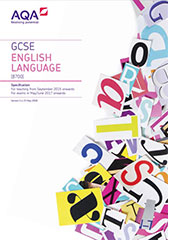
Find past papers and mark schemes, and specimen papers for new courses, on our website at aqa.org.uk/pastpapers
This specification is designed to be taken over two years with all assessments taken at the end of the course.
GCSE exams and certification for this specification are available for the first time in May/June 2017 and then every May/June and November for the life of the specification.
This is a linear qualification. In order to achieve the award, students must complete all exams in November or May/June in a single year. All assessments must be taken in the same series. November entries will only be available to students who were at least 16 on the previous 31 August. See Resits and shelf life in the General administration section for November entry restrictions.
- provide extended responses
- demonstrate their ability to draw together different areas of knowledge, skills and/or understanding from across a full course of study for this qualification.
The final reading question on each paper - Question 4 on Paper 1 and Question 4 on Paper 2 allows students to fulfill this requirement.
All materials are available in English only.
Aims and learning outcomes
Courses based on this specification should encourage students to:
read fluently and write effectively. They should be able to demonstrate a confident control of Standard English and they should be able to write grammatically correct sentences, deploy figurative language and analyse texts.
Courses based on this specification should enable students to:
- read a wide range of texts, fluently and with good understanding
- read critically, and use knowledge gained from wide reading to inform and improve their own writing
- write effectively and coherently using Standard English appropriately
- use grammar correctly, punctuate and spell accurately
- acquire and apply a wide vocabulary, alongside a knowledge and understanding of grammatical terminology, and linguistic conventions for reading, writing and spoken language.
- listen to and understand spoken language, and use spoken Standard English effectively.
The Spoken Language endorsement will be reported on as part of the qualification, but it will not form part of the final mark and grade.
Explorations in creative reading and writing
- in section A, reading a literature fiction text in order to consider how established writers use narrative and descriptive techniques to capture the interest of readers
- in section B, writing their own creative text, inspired by the topic that they have responded to in section A to demonstrate their narrative and descriptive skills in response to a written prompt, scenario or visual image.
The paper will assess in this sequence, AO1, AO2 and AO4 for reading, and AO5 and AO6 for writing. Section A will be allocated 40 marks, and Section B will be allocated 40 marks to give an equal weighting to the reading and writing tasks.
The source for the reading questions will be a literature fiction text. It will be drawn from either the 20th or 21st century. Its genre will be prose fiction. It will include extracts from novels and short stories and focus on openings, endings, narrative perspectives and points of view, narrative or descriptive passages, character, atmospheric descriptions and other appropriate narrative and descriptive approaches.
As a stimulus for students’ own writing, there will be a choice of scenario, written prompt or visual image that is related to the topic of the reading text in section A. The scenario sets out a context for writing with a designated audience, purpose and form that will differ to those specified on Paper 2.
Writers’ viewpoints and perspectives
- in section A, reading two linked sources from different time periods and genres in order to consider how each presents a perspective or viewpoint to influence the reader
- in section B, producing a written text to a specified audience, purpose and form in which they give their own perspective on the theme that has been introduced to them in section A.
The sources for the reading questions will be non-fiction and literary non-fiction texts. They will be drawn from the 19th century, and either the 20th or 21st century depending on the time period assessed in Paper 1 in each particular series. The combination selected will always provide students with an opportunity to consider viewpoints and perspectives over time. Choice of genre will include high quality journalism, articles, reports, essays, travel writing, accounts, sketches, letters, diaries, autobiography and biographical passages or other appropriate non-fiction and literary non-fiction forms.
In section B, there will be a single writing task related to the theme of section A. It will specify audience, purpose and form, and will use a range of opinions, statements and writing scenarios to provoke a response.
Non-exam assessment
- giving a presentation in a formal context
- responding appropriately to questions and to feedback, asking questions themselves to elicit clarification
- using spoken Standard English.
Students must undertake a prepared spoken presentation on a specific topic. The topic is at the discretion. As a guide, the duration should be no more than ten minutes. The key requirements are:
- presentations must be formal but may take a wide variety of forms, including talks, debates, speeches and dialogues
- students must identify the subject for their presentations in advance and agree it with their teacher
- presentations must be planned and organised. Students should be advised that that lack of preparation is likely to prevent access to the criteria for the higher grades
- students may use pre-prepared notes, powerpoint etc. to assist them during their presentations but this is not a requirement
- as part of, or following, the presentation students must listen to and respond appropriately to questions and feedback
- where the audience is the teacher only, the presentation and dialogue must be designed in such a way that it could have a potentially wider audience than just one person (eg it replicates a television interview).
Assessment objectives
Assessment objectives (AOs) are set by Ofqual and are the same across all GCSE English Language specifications and all exam boards.
The exams and Spoken Language endorsement will measure how students have achieved the following assessment objectives.
- identify and interpret explicit and implicit information and ideas
- select and synthesise evidence from different texts
- AO2: Explain, comment on and analyse how writers use language and structure to achieve effects and influence readers, using relevant subject terminology to support their views
- AO3: Compare writers’ ideas and perspectives, as well as how these are conveyed, across two or more texts
- AO4: Evaluate texts critically and support this with appropriate textual references
- AO5: Communicate clearly, effectively and imaginatively, selecting and adapting tone, style and register for different forms, purposes and audiences. Organise information and ideas, using structural and grammatical features to support coherence and cohesion of texts
- AO6: Candidates must use a range of vocabulary and sentence structures for clarity, purpose and effect, with accurate spelling and punctuation. (This requirement must constitute 20% of the marks for each specification as a whole.)
- AO7: Demonstrate presentation skills in a formal setting
- AO8: Listen and respond appropriately to spoken language, including to questions and feedback on presentations
- AO9: Use spoken Standard English effectively in speeches and presentations.
Weighting of assessment objectives for GCSE English Language
Assessment weightings.
The marks awarded on the papers will be scaled to meet the weighting of the components. Students’ final marks will be calculated by adding together the scaled marks for each component. Grade boundaries will be set using this total scaled mark. The scaling and total scaled marks are shown in the table below.
25 Awesome Story Ideas for Creative Writing for GCSE English Language
by melaniewp | Jun 23, 2013 | Creative Writing , English Language Exam , GCSE , IGCSE , Writing | 0 comments
ALL ABOUT CHARACTER

[1] Old man loses his last picture of himself with his long dead wife. This could link to ‘Long Distance’ by Tony Harrison. Trying to find it, he goes through her things. This is one for flashback. He discovers secrets, or that she has left him a series of letters/notes for after her death. Start this when he realises he’s lost the picture.
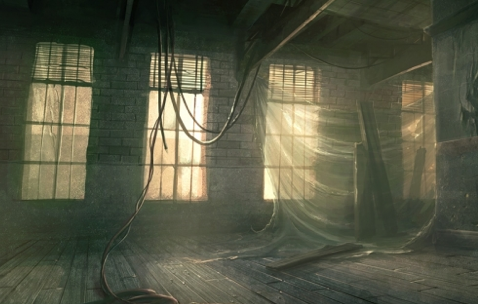
[3] A woman’s (or man’s) jealousy of her (or his) best friend takes over their life . Could link to ‘Othello’ or ‘Medusa’. Think about why. Start this when the woman is with her friend in a frenzy of jealousy…

[4] A model who has always been obsessed with her looks has acid splashed in her face and is disfigured. Could link to ‘Les Grands Seigneurs’, or ‘Mirror’ by Sylvia Plath. Start this with her looking in the mirror then opening her front door… By the way, this story is true. The woman in the picture is called Katie Piper .

[5] Fear of heights : nine year old with family who are in visiting a famous tall tower for the first time. The rest of her family want to go up the tower, but if the child won’t go up, someone will have to stay behind with them. Start this at the foot of the tower…
Want more ideas? Get a complete set plus a teaching scheme with model essays and all resources on my TES Resources shop here .

[6] Small child really wants cake but has been forbidden from taking it down from the shelf. Start this story with the child lusting after the cake, which you should describe – baking, decorating etc – in delicious detail. [ read a short, very funny version of this here ]

[7] A man is obsessed with a woman who does not love him back (or the other way round) . Could link to ‘Havisham’ by Carol Ann Duffy, ‘Give’ or ‘Alaska’ by Simon Armitage or ‘The River God’ by Stevie Smith . Start this when he realises she doesn’t love him back or when he decides to do something about it – get a haircut, stop eating raw onions, go to the gym, pretend that he also loves ‘horoscopes’ and ‘shopping’…

[8] Dangerous Ambition (links to Macbeth). Want the lead role in the school play (or to be head girl/boy)? What will you do to get it? Start this when you realise the lead is up for grabs but you’re not the first choice.

Racing Car driver (motorcross, road or drag racer) is up against his old teammate, now his main rival. Driver needs to win this one or it’s the end of his career. He sees that one of the mechanics on his rival’s car has fixed something up wrong. What does he do?

[9] Jealous woman (or man) chases husband (wife) to find out where they’re going. Could link to ‘Medusa’, ‘Havisham’, or ‘Othello’. Start this story when they decide to chase / follow. Use flashback, or recollection to explain why.
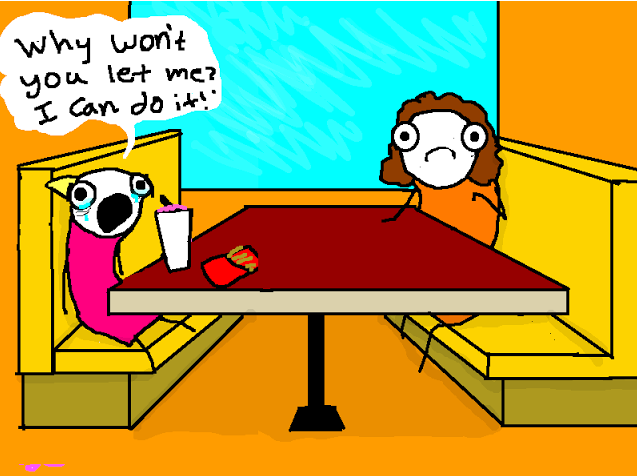
[10] Small child really wants to go to another child’s birthday party but there’s a problem. He has to go to his dad’s that weekend/hasn’t been invited/has to go to the dentist instead. How does he deal with or solve it? Start this story at the moment where the child realises he can’t go. [ read a short, hilarious one here ] III Lost

[11] An old man, who has never cooked or cleaned for himself, has just got home after his wife died (of old age, in hospital). You could link this to ‘Old Age Gets Up’ by Ted Hughes. Now he has to try to do housework – cook, etc. Could be comic / tragic.
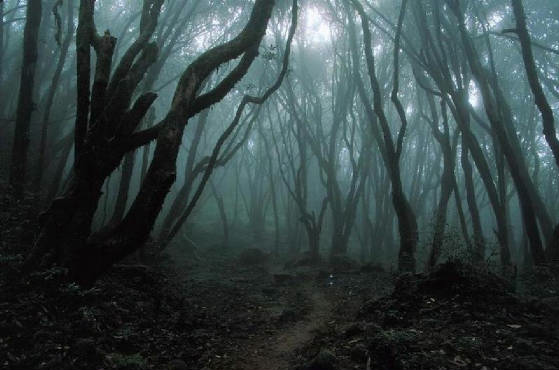
[12] You go for a forest walk (e.g. on a Geography trip or DofE) with someone you don’t like much from school and get lost. Could link to Robert Frost’s poem ‘The Road Not Taken’, ‘Storm in the Black Forest’ by D.H. Lawrence or ‘Wind’ by Ted Hughes. Start this story just before the main character begins to suspect they are lost. Start funny, ends up scary as it starts to go dark. Get describing words for a forest story here .

[13] Parent-Child: In a busy town centre, a mother loses her child who has previously been annoying her . Link this to ‘Mother A Distance Greater…’ by Simon Armitage, ‘Catrin’ by Gillian Clarke or ‘My Father Thought it Bloody Queer’. Start this with the child’s tantrum, mother’s thoughts then quickly move to realising the child is gone.

[14] World famous BMXer (or other sports person, footballer, skateboarder, surfer) is in a car crash – or other accident – and loses his leg. Will he ever ride again? This can link to ‘Out, Out-‘ by Robert Frost. For more on the guy in the photo see this video . Start this story when he wakes up in a hospital bed.

[15] A bsent father returns trying to spend time with his kids. How do they react to seeing him after so long? [this idea is done beautifully in the story, ‘Compass and Torch’ in the AQA anthology Sunlight on the Grass]. You could also link this to ‘Follower’ by Seamus Heaney. Start this when the re’s a knock at the front door.
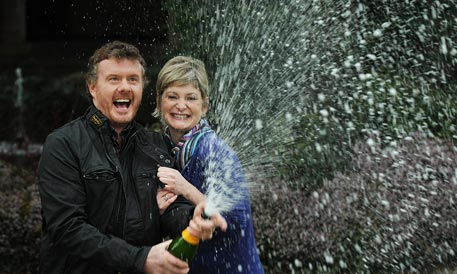
[16] You win a million pounds on the lottery. Everyone you know wants some. What would you buy? Friendships are ruined. Then you are robbed… Start this when you check your bank balance and there are sooooo many noughts at the end it looks like a bank malfunction. IV Coming of Age

[17] Death of a pet. Ferociously funny, very short story about a girl and a fish [ here ]. Start this when you find the pet… dead, or just before. You can use flashback – when you first got the pet, etc.
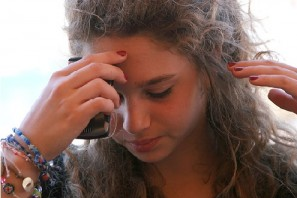
[18] Learning a secret you wish you’d never found out – e.g. finding texts on your dad’s mobile from his girlfriend while your parents are still married – or learning that your mum is planning to secretly leave your dad. Start this when you’re just idly messing with the parent’s phone or laptop.
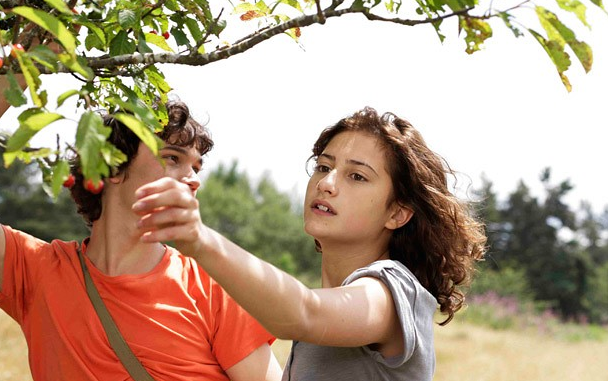
[19] falling in love for the first time , as in Romeo and Juliet. Start this when they see each other or their first proper meeting. Link this to ‘Sonnet 18 Shall I Compare Thee’, ‘Sonnet 116 Let Me Not’, ‘Quickdraw’ or ‘Hour’, by Carol Ann Duffy or ‘To His Coy Mistress’ by Andrew Marvell.

[20] The first time you have to do a really disgusting piece of housework / cook a meal for yourself and how you tackle it. Start this when you realise that no one else is going to do this foul job except you. Read a description of cooking a meal here .
V The Chase / Monsters

[21] You’re camping with your friend in the woods. Then you hear a noise outside (wolves, person, etc). Start this as you’re getting settled to go to sleep – then you hear snuffling (or whatever). Read Bill Bryson’s hilarious account of this exact event, and also an account of surviving a bear attack from the OCR exam paper here.

[22] You have something someone else wants – gold, diamonds etc. They chase you to get it. You choose the landscape: city, ruined derelict warehouses, Brazil, forest, cliffs etc. Start this at the moment you realise someone is following you. You can link this to the final chapter of Lord of the Flies .

[23] You are the last surviving human after the zombie/vampire apocalypse. Now they have found you. This is the plot of ‘I Am Legend’. You can link this to Edwin Muir’s post-apocalyptic poem ‘Horses’, ‘Wind’ by Ted Hughes or the final chapter of Lord of the Flies . Start this at the moment you (or the main character) realises someone is coming towards your hiding place.
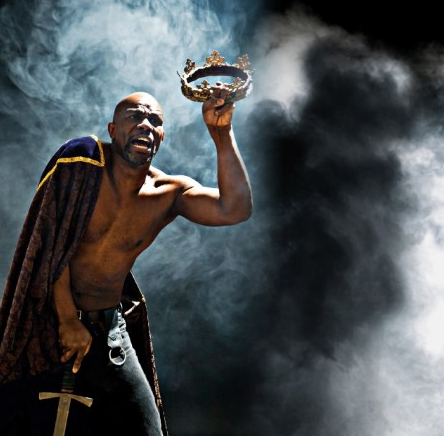
[24] The King is a tyrant who has killed your family. Now you will take revenge . Start this story as you are just about to go through the city walls.
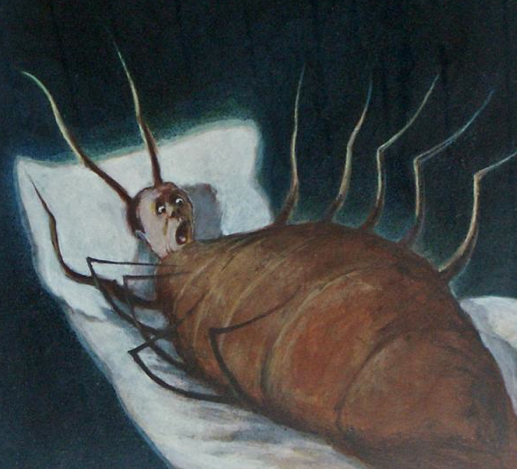
[25] You wake up and discover you have been turned into a giant insect. How does your family react? This is the plot of Kafka’s Metamorphosis. Read this here . Start at the point you wake up, and gradually realise what has happened.
Submit a Comment Cancel reply
Your email address will not be published. Required fields are marked *
Save my name, email, and website in this browser for the next time I comment.
Recent Posts
- Example English Literature Essays For Oxbridge Applications and Coursework
- What is Pathetic Fallacy? Simple Explanation for GCSE, IGCSE, and Common Entrance
- Writing to Describe Photographs of Interesting Places
- Storm on the Island Heaney: Context, Interpretation and Annotation Analysis
- The Prelude, Wordsworth: Context, Analysis, Annotation and Likely Exam Questions GCSE Poetry Exam
Recent Comments
- International
- Schools directory
- Resources Jobs Schools directory News Search

AQA GCSE titles for creative writing
Subject: English
Age range: 14-16
Resource type: Assessment and revision
Last updated
21 March 2018
- Share through email
- Share through twitter
- Share through linkedin
- Share through facebook
- Share through pinterest

Using the sample question as a starting point, I have devised questions on different topics which may be useful for class/group work and/or private revision/practice/homework
Creative Commons "Sharealike"
Your rating is required to reflect your happiness.
It's good to leave some feedback.
Something went wrong, please try again later.
thanks, really helped with my work..
Thanks for taking the time to post a review -especially 5*. 😀
Empty reply does not make any sense for the end user
Thank you too! 😊
jopieteacher
Report this resource to let us know if it violates our terms and conditions. Our customer service team will review your report and will be in touch.
Not quite what you were looking for? Search by keyword to find the right resource:

Turn Your Curiosity Into Discovery
Latest facts.

Tips and Tricks to Help You Create a HIPAA Compliant Email

How to Stop Facial Hair Growth in Females Naturally
40 facts about elektrostal.
Written by Lanette Mayes
Modified & Updated: 02 Mar 2024
Reviewed by Jessica Corbett

Elektrostal is a vibrant city located in the Moscow Oblast region of Russia. With a rich history, stunning architecture, and a thriving community, Elektrostal is a city that has much to offer. Whether you are a history buff, nature enthusiast, or simply curious about different cultures, Elektrostal is sure to captivate you.
This article will provide you with 40 fascinating facts about Elektrostal, giving you a better understanding of why this city is worth exploring. From its origins as an industrial hub to its modern-day charm, we will delve into the various aspects that make Elektrostal a unique and must-visit destination.
So, join us as we uncover the hidden treasures of Elektrostal and discover what makes this city a true gem in the heart of Russia.
Key Takeaways:
- Elektrostal, known as the “Motor City of Russia,” is a vibrant and growing city with a rich industrial history, offering diverse cultural experiences and a strong commitment to environmental sustainability.
- With its convenient location near Moscow, Elektrostal provides a picturesque landscape, vibrant nightlife, and a range of recreational activities, making it an ideal destination for residents and visitors alike.
Known as the “Motor City of Russia.”
Elektrostal, a city located in the Moscow Oblast region of Russia, earned the nickname “Motor City” due to its significant involvement in the automotive industry.
Home to the Elektrostal Metallurgical Plant.
Elektrostal is renowned for its metallurgical plant, which has been producing high-quality steel and alloys since its establishment in 1916.
Boasts a rich industrial heritage.
Elektrostal has a long history of industrial development, contributing to the growth and progress of the region.
Founded in 1916.
The city of Elektrostal was founded in 1916 as a result of the construction of the Elektrostal Metallurgical Plant.
Located approximately 50 kilometers east of Moscow.
Elektrostal is situated in close proximity to the Russian capital, making it easily accessible for both residents and visitors.
Known for its vibrant cultural scene.
Elektrostal is home to several cultural institutions, including museums, theaters, and art galleries that showcase the city’s rich artistic heritage.
A popular destination for nature lovers.
Surrounded by picturesque landscapes and forests, Elektrostal offers ample opportunities for outdoor activities such as hiking, camping, and birdwatching.
Hosts the annual Elektrostal City Day celebrations.
Every year, Elektrostal organizes festive events and activities to celebrate its founding, bringing together residents and visitors in a spirit of unity and joy.
Has a population of approximately 160,000 people.
Elektrostal is home to a diverse and vibrant community of around 160,000 residents, contributing to its dynamic atmosphere.
Boasts excellent education facilities.
The city is known for its well-established educational institutions, providing quality education to students of all ages.
A center for scientific research and innovation.
Elektrostal serves as an important hub for scientific research, particularly in the fields of metallurgy, materials science, and engineering.
Surrounded by picturesque lakes.
The city is blessed with numerous beautiful lakes, offering scenic views and recreational opportunities for locals and visitors alike.
Well-connected transportation system.
Elektrostal benefits from an efficient transportation network, including highways, railways, and public transportation options, ensuring convenient travel within and beyond the city.
Famous for its traditional Russian cuisine.
Food enthusiasts can indulge in authentic Russian dishes at numerous restaurants and cafes scattered throughout Elektrostal.
Home to notable architectural landmarks.
Elektrostal boasts impressive architecture, including the Church of the Transfiguration of the Lord and the Elektrostal Palace of Culture.
Offers a wide range of recreational facilities.
Residents and visitors can enjoy various recreational activities, such as sports complexes, swimming pools, and fitness centers, enhancing the overall quality of life.
Provides a high standard of healthcare.
Elektrostal is equipped with modern medical facilities, ensuring residents have access to quality healthcare services.
Home to the Elektrostal History Museum.
The Elektrostal History Museum showcases the city’s fascinating past through exhibitions and displays.
A hub for sports enthusiasts.
Elektrostal is passionate about sports, with numerous stadiums, arenas, and sports clubs offering opportunities for athletes and spectators.
Celebrates diverse cultural festivals.
Throughout the year, Elektrostal hosts a variety of cultural festivals, celebrating different ethnicities, traditions, and art forms.
Electric power played a significant role in its early development.
Elektrostal owes its name and initial growth to the establishment of electric power stations and the utilization of electricity in the industrial sector.
Boasts a thriving economy.
The city’s strong industrial base, coupled with its strategic location near Moscow, has contributed to Elektrostal’s prosperous economic status.
Houses the Elektrostal Drama Theater.
The Elektrostal Drama Theater is a cultural centerpiece, attracting theater enthusiasts from far and wide.
Popular destination for winter sports.
Elektrostal’s proximity to ski resorts and winter sport facilities makes it a favorite destination for skiing, snowboarding, and other winter activities.
Promotes environmental sustainability.
Elektrostal prioritizes environmental protection and sustainability, implementing initiatives to reduce pollution and preserve natural resources.
Home to renowned educational institutions.
Elektrostal is known for its prestigious schools and universities, offering a wide range of academic programs to students.
Committed to cultural preservation.
The city values its cultural heritage and takes active steps to preserve and promote traditional customs, crafts, and arts.
Hosts an annual International Film Festival.
The Elektrostal International Film Festival attracts filmmakers and cinema enthusiasts from around the world, showcasing a diverse range of films.
Encourages entrepreneurship and innovation.
Elektrostal supports aspiring entrepreneurs and fosters a culture of innovation, providing opportunities for startups and business development.
Offers a range of housing options.
Elektrostal provides diverse housing options, including apartments, houses, and residential complexes, catering to different lifestyles and budgets.
Home to notable sports teams.
Elektrostal is proud of its sports legacy, with several successful sports teams competing at regional and national levels.
Boasts a vibrant nightlife scene.
Residents and visitors can enjoy a lively nightlife in Elektrostal, with numerous bars, clubs, and entertainment venues.
Promotes cultural exchange and international relations.
Elektrostal actively engages in international partnerships, cultural exchanges, and diplomatic collaborations to foster global connections.
Surrounded by beautiful nature reserves.
Nearby nature reserves, such as the Barybino Forest and Luchinskoye Lake, offer opportunities for nature enthusiasts to explore and appreciate the region’s biodiversity.
Commemorates historical events.
The city pays tribute to significant historical events through memorials, monuments, and exhibitions, ensuring the preservation of collective memory.
Promotes sports and youth development.
Elektrostal invests in sports infrastructure and programs to encourage youth participation, health, and physical fitness.
Hosts annual cultural and artistic festivals.
Throughout the year, Elektrostal celebrates its cultural diversity through festivals dedicated to music, dance, art, and theater.
Provides a picturesque landscape for photography enthusiasts.
The city’s scenic beauty, architectural landmarks, and natural surroundings make it a paradise for photographers.
Connects to Moscow via a direct train line.
The convenient train connection between Elektrostal and Moscow makes commuting between the two cities effortless.
A city with a bright future.
Elektrostal continues to grow and develop, aiming to become a model city in terms of infrastructure, sustainability, and quality of life for its residents.
In conclusion, Elektrostal is a fascinating city with a rich history and a vibrant present. From its origins as a center of steel production to its modern-day status as a hub for education and industry, Elektrostal has plenty to offer both residents and visitors. With its beautiful parks, cultural attractions, and proximity to Moscow, there is no shortage of things to see and do in this dynamic city. Whether you’re interested in exploring its historical landmarks, enjoying outdoor activities, or immersing yourself in the local culture, Elektrostal has something for everyone. So, next time you find yourself in the Moscow region, don’t miss the opportunity to discover the hidden gems of Elektrostal.
Q: What is the population of Elektrostal?
A: As of the latest data, the population of Elektrostal is approximately XXXX.
Q: How far is Elektrostal from Moscow?
A: Elektrostal is located approximately XX kilometers away from Moscow.
Q: Are there any famous landmarks in Elektrostal?
A: Yes, Elektrostal is home to several notable landmarks, including XXXX and XXXX.
Q: What industries are prominent in Elektrostal?
A: Elektrostal is known for its steel production industry and is also a center for engineering and manufacturing.
Q: Are there any universities or educational institutions in Elektrostal?
A: Yes, Elektrostal is home to XXXX University and several other educational institutions.
Q: What are some popular outdoor activities in Elektrostal?
A: Elektrostal offers several outdoor activities, such as hiking, cycling, and picnicking in its beautiful parks.
Q: Is Elektrostal well-connected in terms of transportation?
A: Yes, Elektrostal has good transportation links, including trains and buses, making it easily accessible from nearby cities.
Q: Are there any annual events or festivals in Elektrostal?
A: Yes, Elektrostal hosts various events and festivals throughout the year, including XXXX and XXXX.
Was this page helpful?
Our commitment to delivering trustworthy and engaging content is at the heart of what we do. Each fact on our site is contributed by real users like you, bringing a wealth of diverse insights and information. To ensure the highest standards of accuracy and reliability, our dedicated editors meticulously review each submission. This process guarantees that the facts we share are not only fascinating but also credible. Trust in our commitment to quality and authenticity as you explore and learn with us.
Share this Fact:
Claudia Looi
Touring the Top 10 Moscow Metro Stations
By Claudia Looi 2 Comments

Komsomolskaya metro station looks like a museum. It has vaulted ceilings and baroque decor.
Hidden underground, in the heart of Moscow, are historical and architectural treasures of Russia. These are Soviet-era creations – the metro stations of Moscow.
Our guide Maria introduced these elaborate metro stations as “the palaces for the people.” Built between 1937 and 1955, each station holds its own history and stories. Stalin had the idea of building beautiful underground spaces that the masses could enjoy. They would look like museums, art centers, concert halls, palaces and churches. Each would have a different theme. None would be alike.
The two-hour private tour was with a former Intourist tour guide named Maria. Maria lived in Moscow all her life and through the communist era of 60s to 90s. She has been a tour guide for more than 30 years. Being in her 60s, she moved rather quickly for her age. We traveled and crammed with Maria and other Muscovites on the metro to visit 10 different metro stations.

Arrow showing the direction of metro line 1 and 2

Moscow subways are very clean
To Maria, every street, metro and building told a story. I couldn’t keep up with her stories. I don’t remember most of what she said because I was just thrilled being in Moscow. Added to that, she spilled out so many Russian words and names, which to one who can’t read Cyrillic, sounded so foreign and could be easily forgotten.
The metro tour was the first part of our all day tour of Moscow with Maria. Here are the stations we visited:
1. Komsomolskaya Metro Station is the most beautiful of them all. Painted yellow and decorated with chandeliers, gold leaves and semi precious stones, the station looks like a stately museum. And possibly decorated like a palace. I saw Komsomolskaya first, before the rest of the stations upon arrival in Moscow by train from St. Petersburg.
2. Revolution Square Metro Station (Ploshchad Revolyutsii) has marble arches and 72 bronze sculptures designed by Alexey Dushkin. The marble arches are flanked by the bronze sculptures. If you look closely you will see passersby touching the bronze dog's nose. Legend has it that good luck comes to those who touch the dog's nose.

Touch the dog's nose for good luck. At the Revolution Square station

Revolution Square Metro Station
3. Arbatskaya Metro Station served as a shelter during the Soviet-era. It is one of the largest and the deepest metro stations in Moscow.

Arbatskaya Metro Station
4. Biblioteka Imeni Lenina Metro Station was built in 1935 and named after the Russian State Library. It is located near the library and has a big mosaic portrait of Lenin and yellow ceramic tiles on the track walls.

Lenin's portrait at the Biblioteka Imeni Lenina Metro Station

5. Kievskaya Metro Station was one of the first to be completed in Moscow. Named after the capital city of Ukraine by Kiev-born, Nikita Khruschev, Stalin's successor.

Kievskaya Metro Station
6. Novoslobodskaya Metro Station was built in 1952. It has 32 stained glass murals with brass borders.

Novoslobodskaya metro station
7. Kurskaya Metro Station was one of the first few to be built in Moscow in 1938. It has ceiling panels and artwork showing Soviet leadership, Soviet lifestyle and political power. It has a dome with patriotic slogans decorated with red stars representing the Soviet's World War II Hall of Fame. Kurskaya Metro Station is a must-visit station in Moscow.

Ceiling panel and artworks at Kurskaya Metro Station

8. Mayakovskaya Metro Station built in 1938. It was named after Russian poet Vladmir Mayakovsky. This is one of the most beautiful metro stations in the world with 34 mosaics painted by Alexander Deyneka.

Mayakovskaya station

One of the over 30 ceiling mosaics in Mayakovskaya metro station
9. Belorusskaya Metro Station is named after the people of Belarus. In the picture below, there are statues of 3 members of the Partisan Resistance in Belarus during World War II. The statues were sculpted by Sergei Orlov, S. Rabinovich and I. Slonim.

10. Teatralnaya Metro Station (Theatre Metro Station) is located near the Bolshoi Theatre.

Teatralnaya Metro Station decorated with porcelain figures .

Taking the metro's escalator at the end of the tour with Maria the tour guide.
Have you visited the Moscow Metro? Leave your comment below.
January 15, 2017 at 8:17 am
An excellent read! Thanks for much for sharing the Russian metro system with us. We're heading to Moscow in April and exploring the metro stations were on our list and after reading your post, I'm even more excited to go visit them. Thanks again 🙂
December 6, 2017 at 10:45 pm
Hi, do you remember which tour company you contacted for this tour?
Leave a Reply Cancel reply
You must be logged in to post a comment.
Please go to the Instagram Feed settings page to create a feed.

IMAGES
VIDEO
COMMENTS
The style of the writing (sentence structure and overall structure) is dynamic and engaging; Below you will find a detailed creative writing model in response to an example of Paper 1 Question 5, under the following sub-headings (click to go straight to that sub-heading): Writing a GCSE English Language story; Structuring your story
AQA GCSE English Language and English Literature: Advanced Student Book d She doesn't know it yet, but one day she will be me. Now, she is a seven year old, proud of her brittle sandcastle, neither she, nor it, fully formed. I watch her, a phantom of the future, helpless to alter her choices, the cold tide coming in. Of course, you are there ...
Jump ahead to AQA creative writing and persuasive writing prompts from past GCSE papers. The Pearson/Edexcel international iGCSE favoured by many UK private schools has two prompts to choose between for each section. The student is asked to complete a piece of transactional writing (perhaps a persuasive speech or an advertisement leaflet) and ...
June 2019 AQA GCSE (9-1) English Language (8700) Past Exam Papers. June 2019: Paper 1: Explorations in Creative Reading and Writing (8700/1) Download Insert - Download Past Paper - Download Mark Scheme. June 2019: Paper 2: Writer's Viewpoints and Perspectives (8700/2) Download Insert - Download Past Paper - Download Mark Scheme.
writing. in . Section B. Advice • You are advised to spend about 15 minutes reading through the source and all five questions you have to answer. • You are advised to plan your answer to . Question 5. before you start to write. • You should make sure you leave sufficient time to check your answers. Please write clearly in block capitals.
Think about the individual parts of the question and which angles you could take. Some exam boards, including AQA, will give you an image for example, so you could use this to form the basis of your writing.. This will grab the examiner's attention by showing that you are able to respond to a prompt and engage in specific questions creatively.. On the other hand, other exam boards, such as ...
To enhance your children's GCSE creative writing skills, allocate time for practice. Plan a structure for creative writing to guide children in organising their thoughts and managing time during the GCSE exam. Apply this structure to various exam questions, such as short stories or describing events.
How to answer AQA Language Paper 1 Question 5.It's time for creative writing! In this episode, I'll give you all the ingredients theexaminer is looking for i...
Assessment resources. Page. 1. 2. Paper 1. Showing 35 results. Insert: Paper 1 Explorations in creative reading and writing - November 2022. Published 31 Oct 2023. Insert (Modified A4 18pt): Paper 1 Explorations in creative reading and writing - November 2022.
Join my £10 GCSE 2024 Exams Masterclass. Enter Your GCSE Exams Feeling CONFIDENT & READY! https://www.firstratetutors.com/gcse-classes Sign up for our GCSE A...
GCSE English Language Writing learning resources for adults, children, parents and teachers. ... AQA. Writing fiction is an opportunity to come up with creative and original ways of using language ...
Assessment resources. Insert: Paper 1 Explorations in creative reading and writing - November 2022. Insert (Modified A4 18pt): Paper 1 Explorations in creative reading and writing - November 2022. Insert (Modified A3 36pt): Paper 1 Explorations in creative reading and writing - November 2022. Question paper: Paper 1 Explorations in creative ...
How to answer AQA Language Paper 1 Question 5. In this episode, you'll learn some posh vocabulary, and how to use language devices and sentence structure to ...
AQA GCSE Writing practice papers. The AQA English Language GCSE consists of two papers worth 50% each, both with a time-limit of one hour and 45 minutes. Paper 1 focuses on fiction, usually an extract from a novel or short story, and tests students' reading and creative-writing skills. Paper 2 asks students to summarise and compare two texts ...
Scheme of assessment. Find past papers and mark schemes, and specimen papers for new courses, on our website at aqa.org.uk/pastpapers. This specification is designed to be taken over two years with all assessments taken at the end of the course. GCSE exams and certification for this specification are available for the first time in May/June ...
II. Desire. [6] Small child really wants cake but has been forbidden from taking it down from the shelf. Start this story with the child lusting after the cake, which you should describe - baking, decorating etc - in delicious detail. [ read a short, very funny version of this here]
AQA GCSE titles for creative writing. Subject: English. Age range: 14-16. Resource type: Assessment and revision. File previews. doc, 20 KB. Using the sample question as a starting point, I have devised questions on different topics which may be useful for class/group work and/or private revision/practice/homework.
Examples include the epic tales of Harry Master battling Lord Voldemort, an classy struggle in Jurisdiction Park, and the timeless narrative of Latch and the Beanstalk. 2. Rags to Resources. Embarking von a starting point of poverty or despair, characters rise up newly wealth both success.
A report writing format includes a title, table of contents, summary, introduction, body, conclusion, recommendations and appendices. Top report writing tips include writing a report outline, creating the body of the report before the introduction or conclusion, sticking to facts, and keeping your appendix at a reasonable size....
Inkscapetober Day 4: Knot. rating: +15 + - x. . Image Sources. Subject: flagsam aka CuteGirl. Commentary: CuteGirl is currently one of the operators of SkipIRC. When she is not busy moderating the chat, CuteGirl likes to smith from time to time. Therefore I have included Hephaistos, smith to the Greek gods, in the coat of arms.
40 Facts About Elektrostal. Elektrostal is a vibrant city located in the Moscow Oblast region of Russia. With a rich history, stunning architecture, and a thriving community, Elektrostal is a city that has much to offer. Whether you are a history buff, nature enthusiast, or simply curious about different cultures, Elektrostal is sure to ...
6. Novoslobodskaya Metro Station was built in 1952. It has 32 stained glass murals with brass borders. Novoslobodskaya metro station. 7. Kurskaya Metro Station was one of the first few to be built in Moscow in 1938. It has ceiling panels and artwork showing Soviet leadership, Soviet lifestyle and political power.